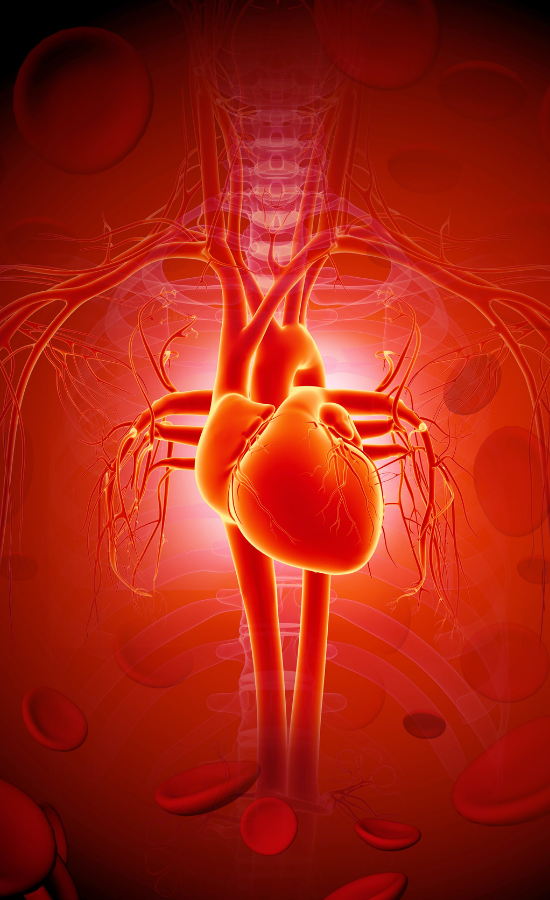Obesity rates have escalated in all populations over the past decades. According to NHANES data from 2014, one in three American adults and one in six American children are obese. An additional one in three adults in the U.S. are overweight. Since obesity is associated with seven out of ten leading causes of death including cardiovascular disease, stroke, type 2 diabetes and cancer this is a significant public health issue.
The causes of obesity have been attributed to genetic predisposition and excessive calorie intake from poor food choices. No one questions these are important components. Yet, excessive calories leading to increase fat deposition is a simplistic view of obesity. Fat tissue is an active endocrine organ. By increasing the amount of fat stored, homeostasis is altered leading to a change in function. This change results in hyperplasia and hypertrophy in the adipose tissue changing the immune system to a state of chronic low-grade inflammation. Metainflammation is the term used to describe this chronic inflammation in the metabolism of obese subjects. Altered lipid homeostasis is also involved in cardiovascular and liver disease that often accompanies obesity.
The immune system can respond to its environment causing an alteration in the type of cells and cytokines released. This immune system plasticity is involved in the development and resolution of a range of chronic diseases including metabolic disorders, cancer, autoimmune disease and chronic inflammatory disease. Specific immune cells such as macrophages alter their subtypes which influence the types of cytokines released. M1 macrophages produce pro-inflammatory cytokines such as TNF-alpha, IL-1B, leukotriene B and express nitrous oxide synthase. In contrast, M2 macrophages release anti-inflammatory compounds such as IL-10 and express arginase 1 which metabolizes arginine away from nitric oxide. T cells also exhibit plasticity with the ability to alter the function of T regulatory and T helper cells.
Adipose tissue of lean individuals contains a prevalence of M2 macrophages producing anti-inflammatory cytokines such as Il-10. T regulatory cells and eosinophils help macrophages maintain the M2 anti-inflammatory state. In contrast, M1 macrophages are the predominant type in obese individuals releasing the pro-inflammatory cytokines TNF-alpha and chemokine ligand C. Both M1 cytokines recruit monocytes to adipose tissue to become additional M1 macrophages. The pro-inflammatory cytokine, IL-1B, is another molecule released by M1 macrophages that has been implicated in the development of type 2 diabetes.
If obesity and some of its complications such as Type 2 diabetes and cardiovascular disease involve a pro-inflammatory immune state, then we need to switch our focus for prevention and treatment. Healthy diet and exercise recommendations will always be a foundation but modifying the immune system away from inflammation should facilitate weight loss. If the pro-inflammatory condition is not altered this may explain why it is so difficult for people to maintain the weight loss over time.
The omega-3 fatty acids, DHA and EPA, have substantial research on their anti-inflammatory impact. Recently, DHA and EPA have been shown to decrease NF-KB activation in adipocytes leading to a decrease in TNF-alpha. DHA specifically increased the anti-inflammatory cytokine IL-10 helping to reduce the pro-inflammatory M1 macrophages. Adipocytes treated with DHA were better able to maintain insulin sensitivity. Adding fish oils to a weight loss or a weight maintenance plan seems simple and safe.
Dietary polyphenols such as tea, resveratrol, and curcumin are other common phytonutrients known to have anti-inflammatory benefits. Cellular studies have shown dietary polyphenols to have a direct effect on adipocytes. They impact the proliferation and differentiation of adipocytes. These compounds modify inflammation through their effect on cell signaling such as PPAR, sirtuin, and NK-KB. Just as adding fish oil to the diet is an easy change, increasing the amounts of polyphenols in the diet is very doable. Obviously eating fruits and vegetables is essential for all people. Adding supplemental polyphenols to specifically target inflammation for those with obesity could be a helpful boost for weight management.
Our microbiome influences the level of inflammation in the gastrointestinal system. Because of this, it also has an impact on obesity. Research is now focusing on the interrelationship between weight and microbiome and found multiple mechanisms of action on energy balance. If the microbiome is abnormal, such as seen with dysbiosis, this can result in an imbalance in energy homeostasis resulting in weight gain. The gut microbiome influences the accumulation of fat cells by multiple mechanisms including satiety, fasting induced adipose factor, fatty acid oxidation, energy harvesting from food and impacts on innate immunity. With the increasing disruption of our microbiome from our food supply and antibiotics, this issue would be expected to continue.
Obesity continues to be a significant health issue. Targeting calorie intake and energy expenditure alone has not made an impact. By understanding the role that metainflammation or inflamm-obesity plays in obesity, we have new avenues for treatment. Multiple natural treatments exist to combat inflammation in the body. It makes sense since losing weight and then keeping the weight off is so difficult to add compounds that support the underlying mechanisms contributing to the persistence of obesity.



- Bäckhed F.et al. The gut microbiota as an environmental factor that regulates fat storage. Proc Natl Acad Sci U S A. 2004 Nov 2; 101(44):15718- 23.
- Bradford PG. Curcumin and obesity. Biofactors. 2013 Jan-Feb;39(1):78-87. doi: 10.1002/biof.1074.
- Dahiya DK. et al. Gut Microbiota Modulation and Its Relationship with Obesity Using Prebiotic Fibers and Probiotics: A Review. Frontiers in Microbiology. 2017;8:563. doi:10.3389/fmicb.2017.00563.
- Esser N. Inflammation as a link between obesity, metabolic syndrome and type 2 diabetes. J Diabetes Res. 2014 Aug;105(2):141-50. doi: 10.1016
- Hotamisligil GS. Et al. Adipose expression of TNF-alpha: direct role in obesity-linked insulin resistance. Science. 1993 Jan 1;259(5091):87-91.
- Lumeng CN. Et al. Obesity induces a phenotypic switch in adipose tissue macrophage polarization. Journal of Clinical Investigation. 2007;117(1):175- 184. doi:10.1172/JCI29881.
- Merla J. et al. Role of lipids in the metabolism and activation of immune cells J Nutr Biochem. 2016 Aug; 34: 1–7.
- Nicto-Vazquez. et al. Insulin resistance associated to obesity: the link TNF-alpha. Arch Physiol Biochem. 2008 Jul. 114(3):183-94.
- Oliver E. Docosahexaenoic acid attenuates macrophage-induced inflammation and improves insulin sensitivity in adipocytes-specific differential effects between LC n-3 PUFA. J Nutr Biochem. 2012
Sep;23(9):1192-200 - Paula Neto HA. Et al. Effects of Food Additives on Immune Cells As Contributors to Body Weight Gain and Immune-Mediated Metabolic Dysregulation. Frontiers in Immunology. 2017;8:1478. doi:10.3389/
fimmu.2017.01478. - Wang S. et al. Novel insights of dietary polyphenols and obesity. The Journal of nutritional biochemistry. 2014;25(1):1-18. doi:10.1016/j.jnutbio.2013.09.001.
Share:
Related Posts

Goodbye Pie Chart, Hello Phase 1 Sliders
Written by Allison Smith, ND | 2025 As we usher in a new era of DUTCH testing which leaves behind the concept of the three-way

Introducing the DUTCH Dozen
Written by Kelly Ruef, ND | 2025 Hormone testing can be complex, which is why Precision Analytical developed the DUTCH Dozen, an interpretive framework that

DUTCH Report Enhancements
Written by Hilary Miller, ND | 2025 Precision Analytical have released the newest version of the DUTCH Test. This is the report’s most significant update

Gallbladder Health 101: What It Does and How to Keep It Working Well
Written by Ashley Palmer & Pooja Mahtani | 2025 The gallbladder may not get much attention compared to the gut, but it plays a central

Can You Bring Vitamins on a Plane? How To Travel with Supplements
Written by Austin Ruff | 2024 Are you traveling for a work conference, an athletic competition, or a weekend getaway? Just because you’re leaving home


